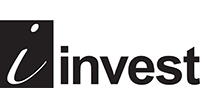Midlife job-seeking is often subject to ageism and disheartening rejections from automated application tracking systems – unless you change your narrative, says coach and author of a new book Sarah Bird
In the first month of working as a volunteer coach on a local employability course it was glaringly obvious there was one quality that every job-seeking participant lacked –resilience. Job seeking is a holistic endeavour that involves far more than tidying up a CV or improving interview technique. Yet, many potential candidates are dispirited, lacking in confidence and not in the state of readiness to continue with the process –especially those in midlife.
The World Health Organization has acknowledged that every second person in the world is believed to hold ageist attitudes. As one midlife candidate summed up in a national press article earlier this year: “After six months of tumbleweed, it got to the point that I had to stop job-hunting for the sake of my mental health. I felt completely invisible”.
This hit to self-esteem is also evident in midlifers currently in a job. Research published in the Corndell Workplace Training Report 2024 found that nearly one in five over 55s (19%) did not feel confident enough in their current skillset to find new employment or pivot their career if they were to lose their current job, compared with one in 10 (8%) of under 55s. While data from People Insight reports dissatisfaction from age-based differentials, especially for men, in multiple areas such as training, communication and recognition.
Despite these findings, midlifers often more loyal, good leaders and communicators, and are considerably healthier, physically and mentally, than in the past. A survey from the International Monetary Fund found that a person aged 70 in 2022 had the same cognitive function as the average 53-year-old in 2000 and boasted the same fitness as 56-year-olds 25 years ago based on grip strength and lung functionality tests.
For those employers who see past the irony that experience is essential when you’re starting out but only hampers your options later in life, there’s a strong argument for midlife career reinvention. In its report on the Future of Jobs 2025, the World Economic Forum found that executives are aware that upskilling and reskilling is a priority – 92% of employers indicate they will focus on these strategies by 2030 and the potential for expanding talent availability by tapping into diverse talent pools is highlighted by four times more employers (47%) than two years ago (10%).
Adding the human touch
As artificial intelligence becomes mainstream, being more human could be the new differentiator. Midlife employees who have “been there, bought the tee shirt” are in prime position to serve a climate that demands adaptability and resilience. But they may need to find ways to dispel baked-in assumptions about their ambitions and capabilities by reframing their personal narrative.
Telling stories to share understanding and make sense of what happens to us has been part of the fabric of our lives since the beginning of time. Indeed, unemployment in midlife offers the perfect opportunity to take stock of our multi-storied lives and the threads that weave career events together to form a unique story.
In tune with the unprecedented blending of our personal and professional lives, one approach employers and employees could consider to tease out that storytelling is Narrative Practice. Narrative Practice is a therapeutic technique employed today in the fields of psychotherapy and counselling; it involves inviting people to express deep seated concerns or challenges and then uses powerful storytelling techniques to liberate those who feel stuck with thoughts or behaviours that are questionable, inaccurate or simply unhelpful. Based on the idea that we are all experts in our own lives, Narrative Practice is a respectful, non-blaming approach that engages and empowers the individual.
For instance, one of the Narrative Practice therapeutic tools is the Tree of Life which was developed to help individuals and communities to express their life stories and values. Using the metaphor of a tree, one of the universal symbols of life, people can explore identity, relationships, and personal growth to better evaluate their work journey. By identifying how an individual’s career fits in the different areas of the tree, they can reframe working life experiences in ways that affirm their values and strengths, even when they are uncertain or unhappy about their prospects for the future – as illustrated in the Tree of Life Template.
How to use the Tree of Life Template
Focus on marking up your responses to the following sections of the tree:
- The roots: Indicate the strong influences which have shaped your career to date. Include the companies, values, and important people who lie at the heart of your working life.
- The trunk: Represents what you are good at and how you have navigated your career. Include your key strengths, skills and abilities.
- The leaves: Signify the important relationships and influencers along your career journey. Include family, friends, mentors and media.
- The fruits: Represent our own achievements and the gifts received from others. Include projects you have organised, groups you started or joined, materials or content you developed or community service you have undertaken.
- The buds: Represent your hopes for the future. Include where you hope to be in five years, career opportunities you are considering. You can also add thorns to represent the difficulties in helping these buds to blossom.

“The trunk represents what you are good at and how you have navigated your career”
Welcome the silver intern
Storytelling can reinforce midlifers’ strengths and prompt alternative stories to build their resilience. And employers can help midlifers find where they fit in the job market, too, by rethinking traditional recruitment models.
One way may be to encourage the placement of silver internships – like current internships but for midlifers. Whether a one-off project or serving a broad number of departments in a range of tasks, silver interns could undertake three-, six- or 12-month placements to bring much-needed skills and experience at a suitable cost. In this way, companies can benefit from experienced hires who can get on with the job and midlifers can continue to make an effective contribution without being subjected to age bias.
Three steps to career storytelling
No matter what our age, we’re all work-in-progress. Reframing thoughts and attitude in midlife isn’t easy but accepting that resilience is a lifelong project and making storytelling part of every individual’s DNA can lead to career transformation.
Here’s three tips that can help:
- Tell the story: Employ narrative practice techniques (visit nynclub.co.uk for a free Workbook of exercises). Put thoughts into words and make it a muscle memory.
- Evaluate the story: Follow and connect career “red threads” (constant underlying themes). No experience is every wasted and can be part of an unfolding “master plan” over time.
- Refresh the story: Collaborate continuously. Engage in continuous learning and involve others to verify and create a career story ongoing.
Introducing storytelling and refreshing our personal narrative in midlife can reinforce our strengths, increase self-awareness and encourage flexibility and inclusivity—silver linings that build resilience, control and authenticity that, ultimately, benefits employees and employers.

About the author
Sarah Bird is a professional business writer and editor with more than 30 years of experience working with large corporate organisations. She is the writer and coach for two training programmes for post-education jobseekers and students in education. Her book: Nail Your Narrative reveals how to embrace storytelling to unlock your full potential in midlife. Gain a resilient mindset and change the narrative you’re telling yourself and others by downloading the FREE practical Workbook here.

Nail Your Narrative: How to Use Storytelling to Reinvent Your Career in Midlife by Sarah Bird is out now, priced £9.99

